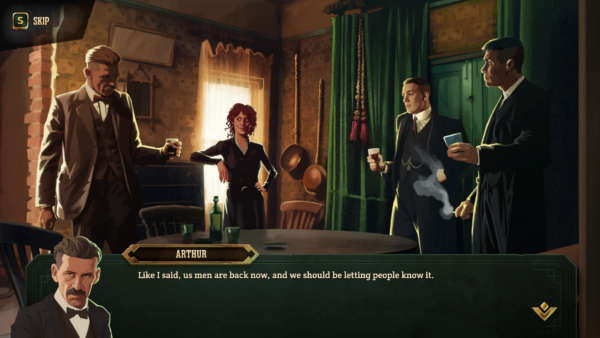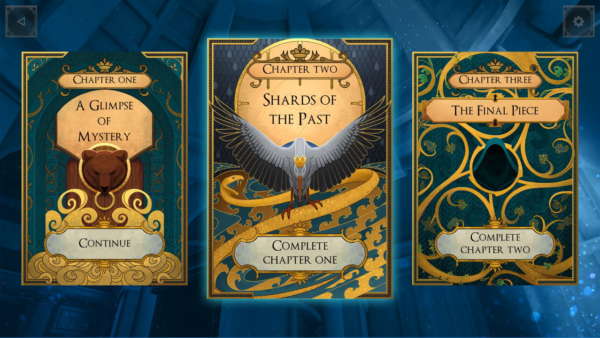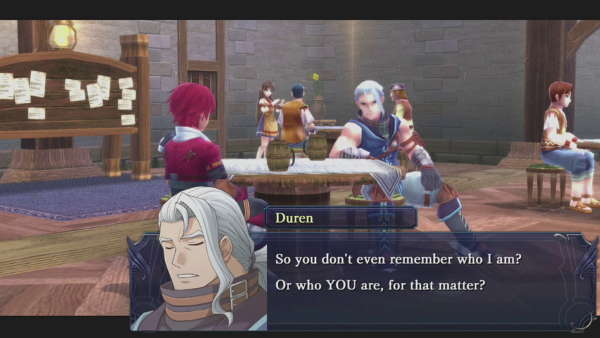With Assassins Creed 4: Black Flag just around the corner, it seems fitting to go back to the world of 1770 America. With a world rich in vistas and interaction and with an immerse, historically accurate land of muskets and politics it’s easy to ignore the somewhat basic gameplay and undercooked storyline.
Games this beautiful don’t come around often and Ubisoft has made sure to make the most of the historical nuances from this period. Whilst it doesn’t have the same sprawling city designs of AC2 or Revelations you will still be stunned by the endless acres of forests, rivers and waterfalls which become your new playground in this title. The cities of Boston and New York don’t rival Rome or Constantinople but they still serve your interest and still provide plenty of, ‘hay jumping’ shenanigans. So the world is neat, but without the hero from AC2 and ACR Ezio Auditore in charge this year there is a lot of weight to be pulled by his new, half-Birtish/half-Native American long distance relative, Connor Kenway. Here is where the narrative starts to spoil the almost Utopian 18th century world that you are involved in. Connor does not have any strong personality going for him. If having to wait roughly 8 hours to even play the new protagonist wasn’t irritating enough his backstory should at least make us root for him, which isn’t the case at all. Put simply he isn’t interesting, a disappointing dessert to the wondrous main course that was Ezio earlier in the series. The main character may not be strong, but the support cast and overarching story (at least until the conclusion) is far more potent. Big questions over the Templar and Assassins debate are brought to the fore and placing this in the context of the American Revolution, where betrayal and alternate motives between the American colonists and Britain are rife was a very clever move. Bundle this up with George Washington and Benjamin Franklin driving the story on and you have a pretty awesome historical project unfolding in front of you.
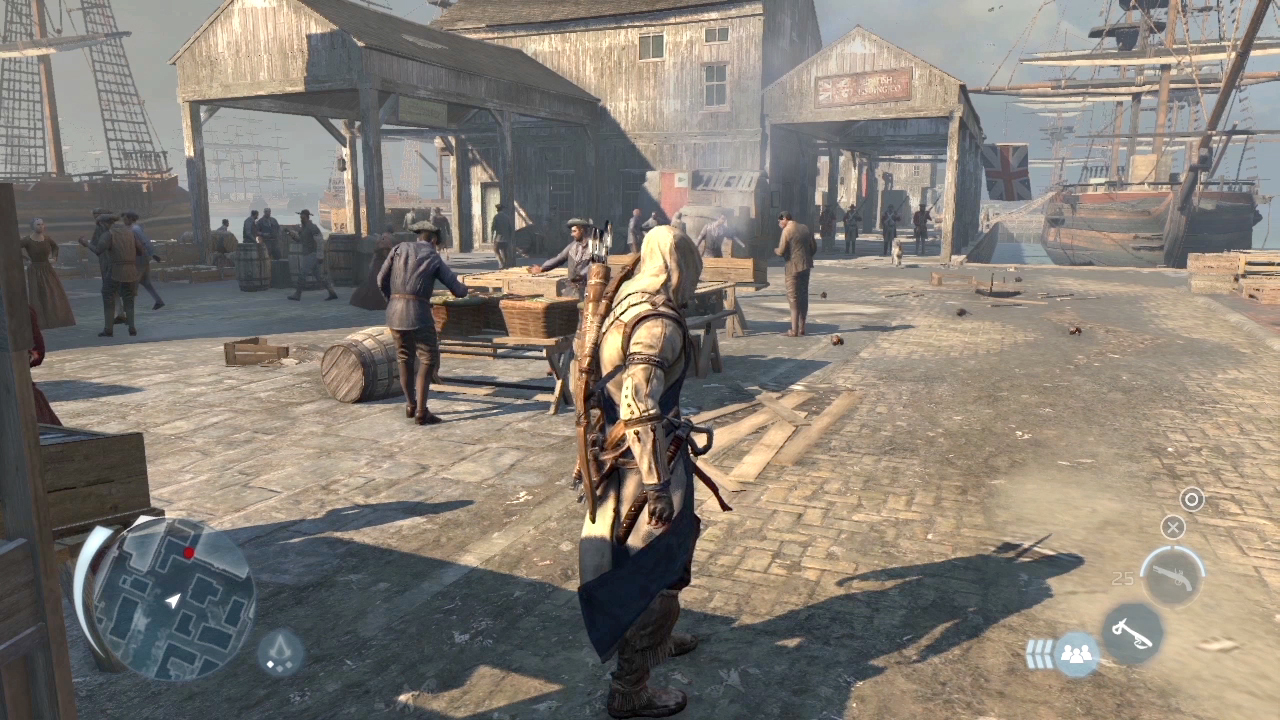
“This is pretty much as close as we can get to re-living history for a long time.”
As for the gameplay, Connor has plenty of options open to him with which to deal colonial justice, which he can do pretty easily. Muskets, knives and hand-to-hand combat are just the beginning to a larger collection of weapons such as poison darts, smoke bombs, tomahawks, etc. Mission design also adds variety, whilst sometimes being monotonous on occasion. These somewhat slower missions are broken up by town raids, naval assaults and taking down entire squads of musket men in open field combat. Assassins Creed 3 also implements the previous, ‘hub system’ of Revelations allowing players to create a small village in which loggers, iron-smith workers and hunters can join Connor’s estate in order to create new items and tools. This is further supplemented by the ability to collect almanac pages for Franklin (prepare yourselves for about 30 hours of extra gameplay if you take on this feat), pirate raiding and feather collection. Small features such as local pub games also add to the general ambiance and dynamics of the game. Combat however has not moved on massively. In comparison to other free forming combat titles, like that seen in Batman: Arkham City, fighting has become increasingly simplified and predictable. This is a real shame and a missed opportunity as the introduction of musket mechanics and native weaponry could have led to more interesting fight scenes instead of simply blocking and countering attacks via prompts.
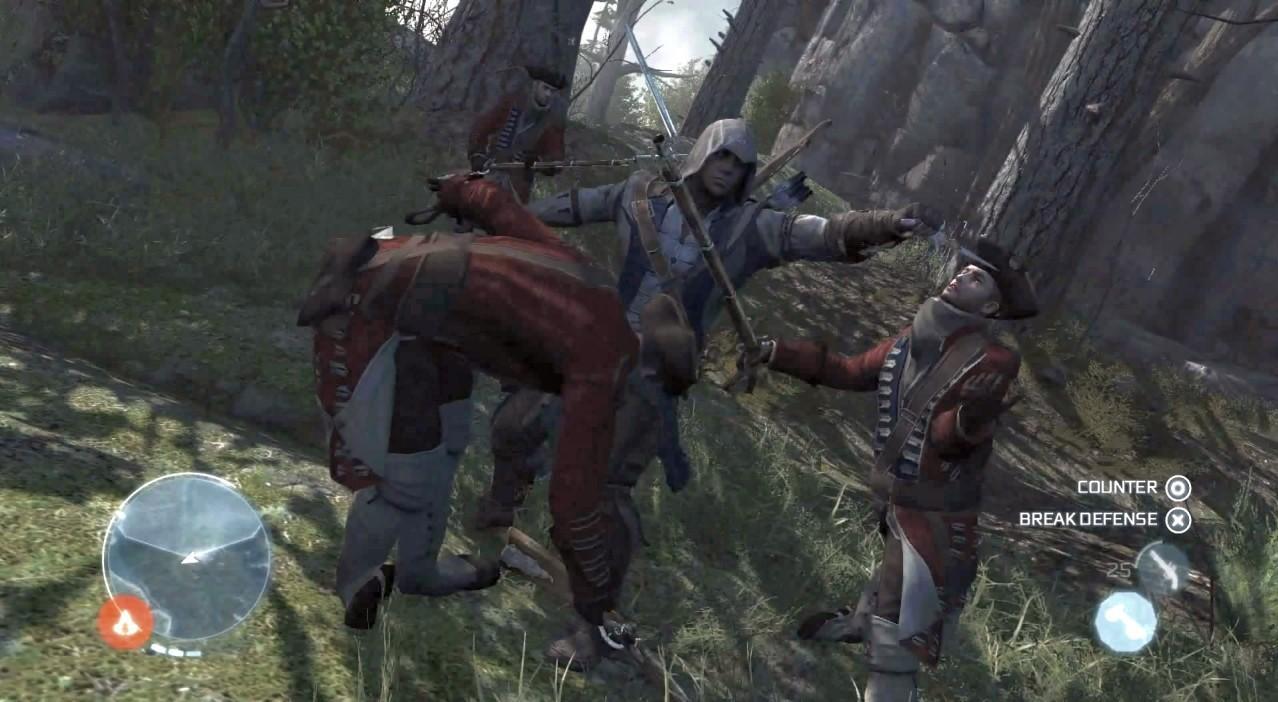
“Pretty to look at, not fun to execute.”
The free-running system within the game also deals incredibly well with the new tree heavy environment which still holds enough interest for each area to be historically accurate and unique. Whilst not fulfilling mechanically the game is still breath-taking which makes the really unsatisfying ending after a 20+ hour campaign so much more depressing. As a rule of thumb, ignore sections outside the Animus, enjoy the scope of the American world. It’s worth noting that the multiplayer in Assassins Creed 3 is a beast all of its own. Whilst it follows a reward and perk system similar to that of the Call of Duty formula the gameplay itself is just awesome. You really do feel like an assassin, blending in with the environment and NPC’s until your target, highlighted on the screen, passes by and you snag a wonderful kill bonus. Going from the blundering idiot stabbing everything left and right to a, ‘master assassin’ over the 5 days of game time was the most rewarding experience of the entire game. And this is only the free-for-all options, with team-based objective modes and a Wolf Pack Mode, which sees players tag team online to co-ordinate attacks on NPCs further splicing and altering the mix.
In the end, the mechanics are simple, the plot both in conclusion and in execution with Connor is dry and boring but there is much more to this title. A world truly alive, making you feel as though you are walking through 18th century America is tied together with a vast array of missions and side quests which do much to distract from the barebones mechanics that lie underneath. When put to the test in multiplayer these issues become even less apparent with thrilling hunts and chases taking up hours in your day quite easily. Coming back to this title has got me pumped for the sequel, which promises even more scale and opportunity to explore a rich land of adventure. I shall be seeing you on the multiplayer, that is for sure!
